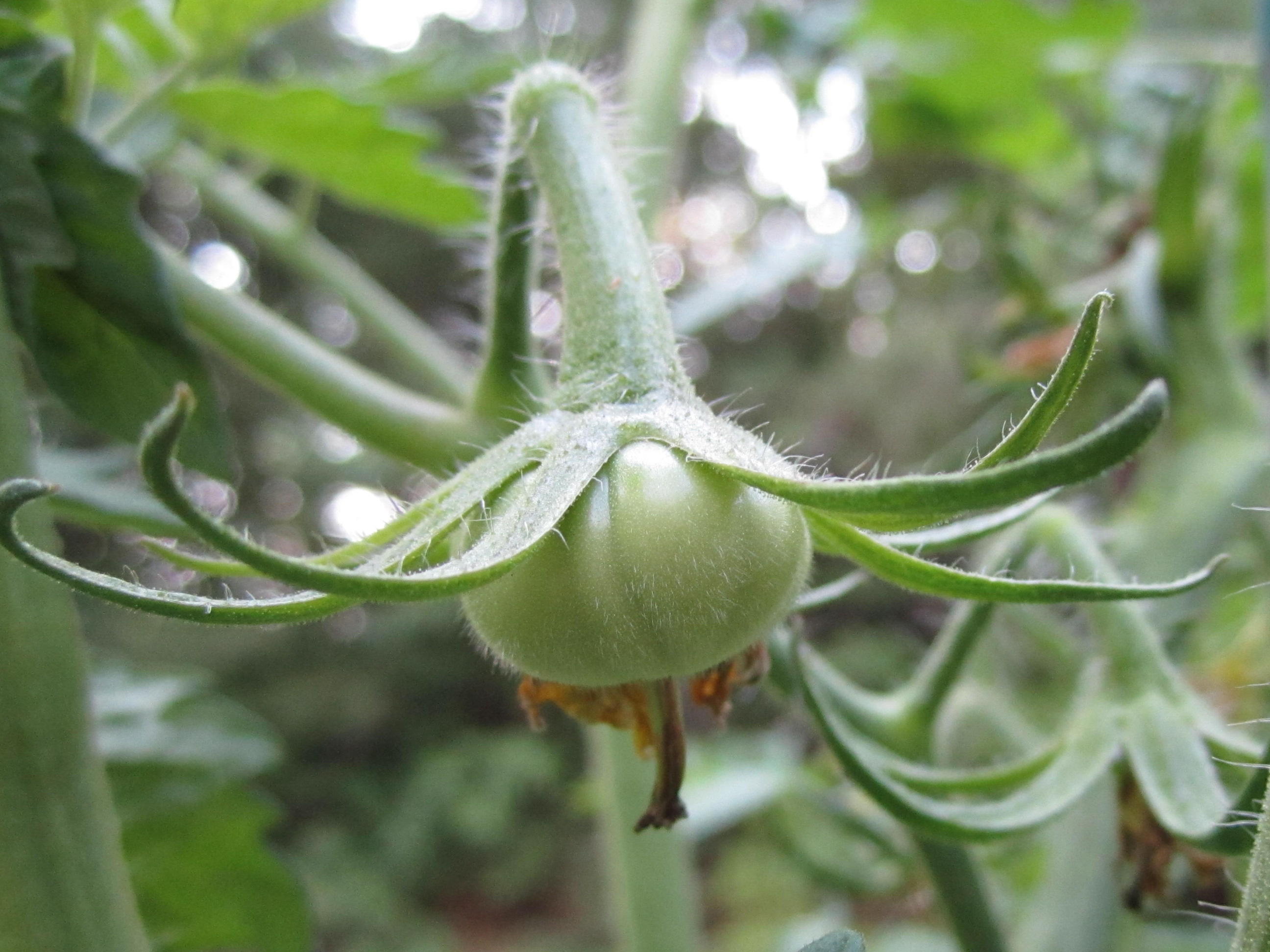Cherokee Purple on:
[Wikipedia]
[Google]
[Amazon]
 Cherokee Purple is an heirloom variety of
Cherokee Purple is an heirloom variety of
tomato
The tomato (, ), ''Solanum lycopersicum'', is a plant whose fruit is an edible Berry (botany), berry that is eaten as a vegetable. The tomato is a member of the nightshade family that includes tobacco, potato, and chili peppers. It originate ...
that develops a fruit with a deep, dusky-rose color while maintaining a somewhat greenish hue near the stem when mature for eating. The deep crimson interior and clear skin combination give it its distinctive color. It was one of the first of the darker color group of tomatoes sometimes described as "blacks." Southern Exposure Seed Exchange Southern Exposure Seed Exchange (SESE) is a cooperatively-owned seed company based out of Mineral, Virginia. SESE is a source for heirloom plant, heirloom seeds and other open pollination, open-pollinated (non-hybrid (biology), hybrid) seeds with an ...
was the first seed company to offer Cherokee Purple, released in limited quantity in 1993. The Cherokee Purple has become a popular heirloom variety.
History
In 1990 John Green ofSevierville, Tennessee
Sevierville ( ) is a city in and the county seat of Sevier County, Tennessee, United States, located in East Tennessee. The population was 17,889 at the 2020 United States Census.
History
Native Americans of the Woodland period were among th ...
mailed heirloom tomato expert Craig LeHoullier seeds of an unnamed purple tomato. Green said that the tomato had originated with the Cherokee
The Cherokee (; , or ) people are one of the Indigenous peoples of the Southeastern Woodlands of the United States. Prior to the 18th century, they were concentrated in their homelands, in towns along river valleys of what is now southwestern ...
s more than 100 years previously. LeHoullier named the tomato "Cherokee Purple" and sent seeds to the Southern Exposure Seed Exchange (SESE). Jeff McCormack, the owner of SESE, said that the tomato "tasted fine, but was kind of ugly -- people may not like it." SESE featured the Cherokee Purple in the 1993 seed catalog. LeHoullier distributed Cherokee Purple seeds to several market growers and one of them, Alex Hitt, who lived in North Carolina
North Carolina ( ) is a U.S. state, state in the Southeastern United States, Southeastern region of the United States. It is bordered by Virginia to the north, the Atlantic Ocean to the east, South Carolina to the south, Georgia (U.S. stat ...
, had an immediate success growing and selling the tomato despite its ugly appearance. The tomato was described "as looking like a leg bruise."
In 2014, Cherokee Purple was named one of the top ten tomato heirloom varieties by the Seed Savers Exchange
Seed Savers Exchange, or SSE, is a non-profit organization based near Decorah, Iowa, that preserves heirloom plant varieties through regeneration, distribution and seed exchange. It is one of the largest nongovernmental seedbanks in the United Sta ...
.
Characteristics
Cherokee Purple tomatoes are beefsteak in style. They are also notable for having a dense, juicy texture, with small seedlocule
A locule (: locules) or loculus (; : loculi) is a small cavity or compartment within an organ or part of an organism (animal, plant, or fungus).
In angiosperms (flowering plants), the term ''locule'' usually refers to a chamber within an ovary ...
s irregularly scattered throughout the flesh. The comparatively dark interior color is enhanced by the tendency of the seeds to be surrounded by green gel. In 1995, a skin color mutation of Cherokee Purple arose in Craig LeHoullier's North Carolina garden. It was named Cherokee Chocolate, and the yellow skin gives the variety a brownish mahogany hue. Cherokee Green arose in Craig's garden in 1997 from a planting of Cherokee Chocolate. It is one of several tomatoes whose flesh stays green when it ripens; the skin color is yellow, which provides a guide to indicate when the tomato is ripe and ready for harvest.
The Cherokee Purple tomato is most commonly available in the summer and fall. This tomato is best enjoyed fresh and is often used in BLT
A BLT is a type of sandwich, named for the initials of its primary ingredients, bacon, lettuce, and tomato. It can be made with varying recipes according to personal preference. Simple variants include using different types of lettuce or tomato ...
s and salads. It can also be used when making pizza and pasta sauces.
See also
*List of tomato cultivars
There are more than 10,000 tomato varieties available.
__NOTOC__
Table of tomatoes
See also
* Lists of cultivars
* List of tomato dishes
Notes
#
::Some tomato cultivars will be marked with disease resistance codes, signifying that the plan ...
References
{{Tomatoes Cherokee culture Heirloom tomato cultivars